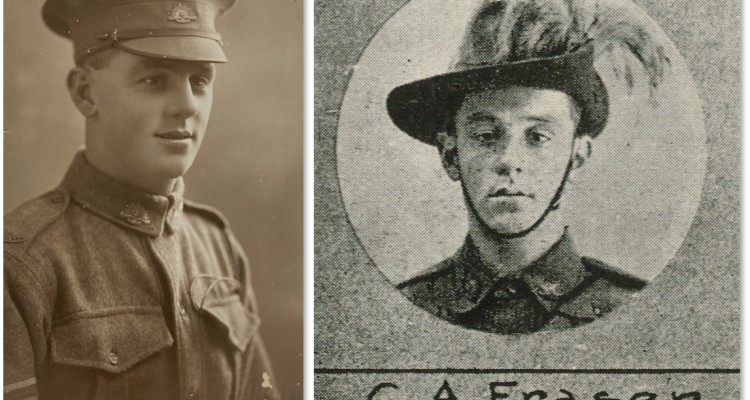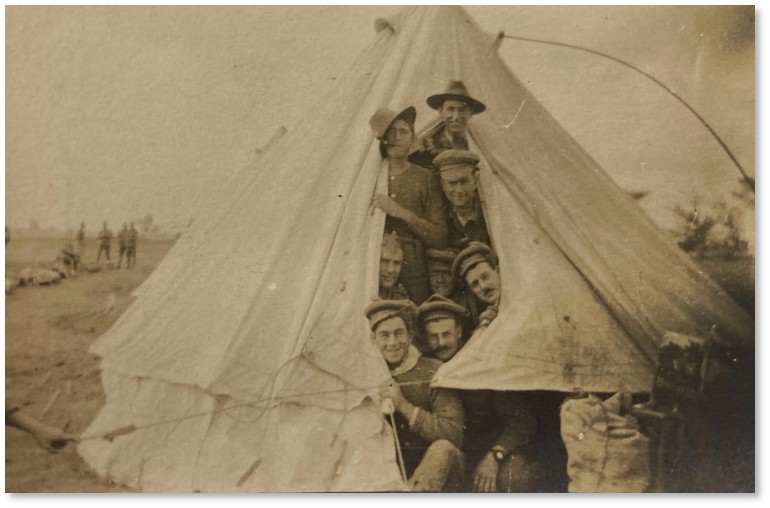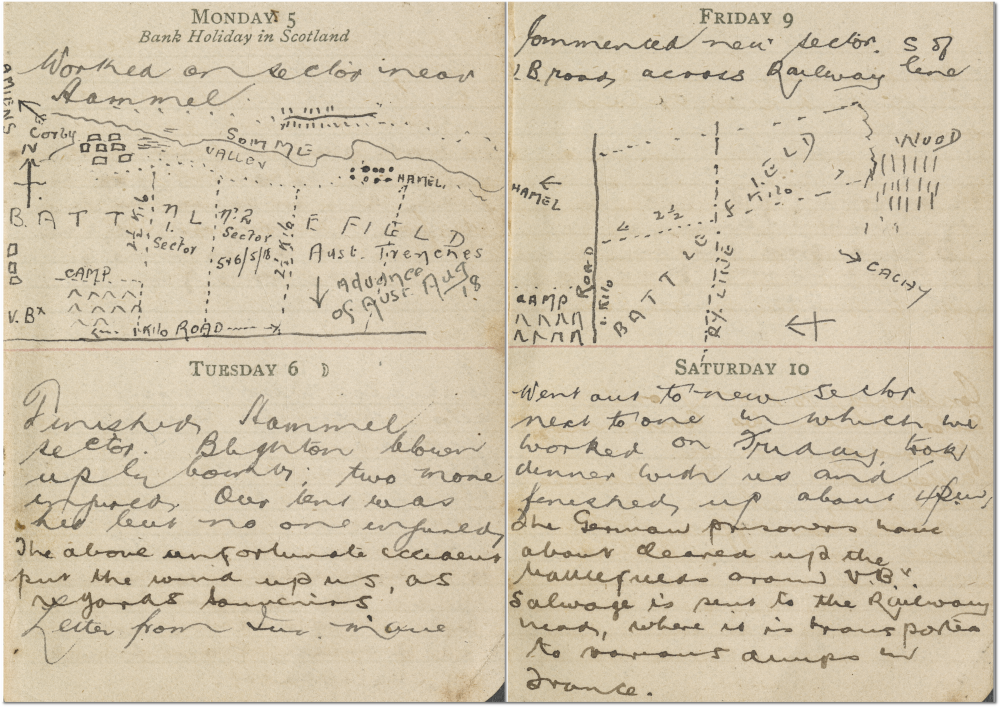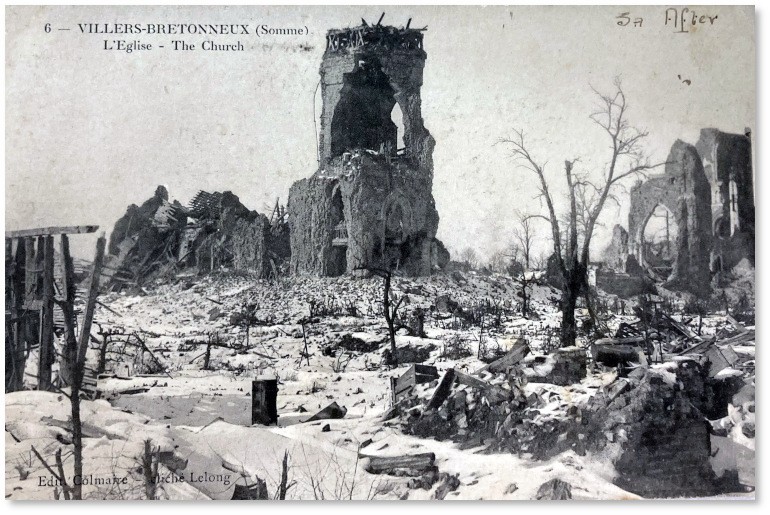
Claude Fraser, Graves Registration Detachment, 1919
Sacred and soldierly duty, the diary of Claude Fraser, Graves Registration Detachment, 1919
Initially assigned to the 6th General Service Reinforcements Queensland, Claude Fraser age 18, left Sydney in September 1918 and on arrival in England was transferred to the 9th Infantry Battalion, just days before the armistice was declared. Claude who had never seen frontline service, volunteered for the Graves Registration Detachment, the Australian section of the Imperial War Graves Unit, to work in France searching the battlefields for the fallen.

Claude's diary begins 1 January 1919 sightseeing in London before taking the train north to Edinburgh to stay with family, returning to camp at Codford 12 days later. Shortly after he was picked for the draft to go to France and on 23 January embarked from Southampton on board the 'Chaile' with the other volunteers. They were billeted at Abancourt, where German prisoners were constructing quarters for troops waiting to return home.
The Graves Registration Detachment was formed under the command of Major John Eldred Mott, MC, with Captain George Frederick Gould, MC, Lieutenant Allen Charles Waters Kingston, DSC, MSM and Lieutenant Herbert William Mott. It consisted of a battalion of 5 companies of 1,100 men with motor and horse transport. Volunteers were called for work on locating, exhuming, identifying and reburying of Australian war dead, on the Western Front, for an indefinite period.
Over 46,048 Australian servicemen lost their lives fighting on the Western Front and less than half had their locations recorded.
The unit then moved on to Amiens, Arras, Charleroi and Brussels, taking in the sights, learning French and playing sports during their down times. It wasn't until April that they began their gruesome work of looking for graves and digging trenches for unburied bodies, near Villers-Bretonneux. Exhumed bodies were identified by whatever means available: identity discs, personal effects, letters found in their pockets, or their battalion colour patch.

The bodies were then wrapped in hessian with identification notes, and transported short distances by stretcher, or longer distances by horse-drawn wagon to the cemetery, where they were reburied with a cross over each grave. Australian Graves Detachment (AGD) personnel photographed all identified graves, which were later sent to the deceased's next of kin, a small comfort for their grief.

Accommodation was usually in tents or huts, the battlefields were still littered with barbed wire, shell holes, trenches and unexploded ordnance that 'went off' at unexpected moments. Claude and his mates would periodically set alight a cordite dump and watch 'the fireworks'.

As they worked (weather permitting) Claude described the heart breaking sight of the arrival of French families returning to their ruined homes. German prisoners were put to work to assist them.
The entries for 5 & 9 May 1919 include sketches of the sector they were working in near Hammel, west of Amiens and Villers Bretonneux. During this month orders were received by the GRD to exhume and re-bury French soldiers.
The total number of bodies re-buried in May was 853.

The work was exhausting and particularly unpleasant, especially exhuming bodies that had been buried in August 1918. German prisoners were also put to work clearing battlefields and loading salvage (equipment and ordnance) on railway trucks for transportation to dumps elsewhere in France.
In June officials arrived from Australia and England including Australian Prime Minister W. M. Hughes, to formally select a site for an Australian Corps Memorial Cemetery at Villers-Bretonneau. Shortly thereafter the party left for Paris where they attended the Peace Conference. So many of the missing were never found and so the erection of memorials at Villers-Bretonneux, Menin Gate and Lone Pine (Gallipoli) where their names are recorded in perpetuity.
The total number of bodies exhumed during June was 900.

He wrote "one or two buildings only left standing and the whole town is a mass of ruins, old artillery pieces, ammunition, unexploded bombs and shells. And amongst this mass of war refuse are numbers of little crosses marking the graves of either British or Australian soldiers".
Claude also describes the sorrowful sights of the large war cemeteries. They moved onto Crucifix Cemetery at Villers Bretonneux, then Proyart, and Albert where hardly a building or tree stood.
The total number of bodies re-buried during July was 1854
Late July 1919 they were warned of the demobilisation of the unit, and their departure for England, and Claude was granted 7 days leave to Paris where he joined a group and a guide visiting many places of interest in the city. The battalion eventually departed 15 August for Le Havre where they were ferried across the channel to Southampton. 3 officers and 30 other-ranks formed the last remaining Unit to be known as the Australian Graves Service, to remain in France for a period of 2 years.
The total number exhumed and re-buried by the Australian Graves Unit in 1919 was 5469.
While they waited for their ship, Claude and his companions took time to further explore London before finally departing for home on 26 September. Claude Fraser went on to establish one of the first 'self-service' grocers, the Brisbane Cash and Carry stores, which he later sold to Woolworths.
In 1954 Claude took his family, wife Gladys and their four children to revisit the cemeteries in France where he had laboured over 30 years before ...
Read more …
- 33453, Claude Fraser collection, State Library of Queensland
- Collection Guide, Claude Fraser Collection
- Service record WW1: National Archives of Australia. Series B2455, Item ID 4033618
- Service record WW2: National Archives of Australia. Series B884, Item ID 4463216
- Manuscript. Photocopy of a history titled: 'Claude Fraser life/army' by Patricia Fraser McNab. Item 1 Personal Papers, 33453 Claude Fraser collection
- Diary of Australian War Graves Detachment, 1919. Australian War Memorial
- "A sacred duty" : locating and creating Australian graves in the aftermath of the First World War / Julia Smart, 2016
- A sacred duty: the Australian graves effort
Search ...
Commonwealth War Graves Commission - Find war dead
Watch ...
Australia’s Federation Guard at the Australian National Memorial in Villers-Bretonneux [YouTube]